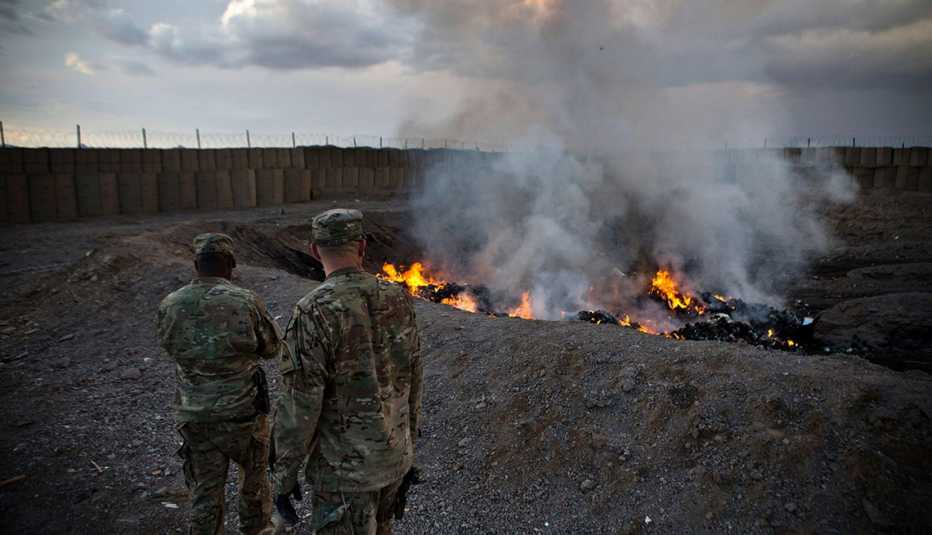Respiratory Illnesses in Veterans Linked to Military Exposures
Respiratory diseases have become an increasing concern for veterans of recent wars and conflicts. Studies show connections between lung disease rates and certain environmental exposures during military deployment. This article examines three major exposure risks faced by troops – burn pits, oil well fires, and particulate matter.
Burn Pits
Open-air burn pits were commonly used to dispose of waste at military sites in Iraq and Afghanistan. A wide range of materials were burned, including plastics, batteries, appliances, medicine, and human waste. The large, smoldering burn pits released dangerous fumes and soot into the air continuously [1]. As a result, prolonged exposure for veterans may have led to reduced lung function and other problems. One study found that soldiers who served at bases with burn pits had a higher rate of irritant-induced asthma compared to those at bases without burn pits [2].
[1] https://www.publichealth.va.gov/exposures/burnpits/health-effects.asp [2] https://www.ncbi.nlm.nih.gov/pmc/articles/PMC4514022/
Oil Well Fires
During the Gulf War in 1991, over 700 oil wells were set on fire by Iraqi troops. These massive raging fires burned for over 9 months across the Kuwaiti oil fields. Troops were exposed to huge plumes of black smoke, containing fine particulate matter, sulfur dioxide, and other petrochemicals [3]. In the years since, Gulf War veterans have experienced a constellation of respiratory symptoms known as Gulf War Illness. Studies suggest a link between this condition and exposure to oil well fire smoke [4].
[3] https://www.ncbi.nlm.nih.gov/books/NBK208861/ [4] https://www.ncbi.nlm.nih.gov/pmc/articles/PMC1594829/
Particulate Matter
The dusty, sandy conditions of deployments in Iraq and Afghanistan also exposed troops to particulate matter and dust storms. Fine airborne particles can penetrate deep into the lungs when breathed in. A recent study found that soldiers deployed to Iraq and Afghanistan were more likely to develop constrictive bronchiolitis. This permanent narrowing of the tiniest airways is likely caused by chronic particulate exposure [5].
[5] https://www.atsjournals.org/doi/full/10.1513/AnnalsATS.201212-127FR
The Department of Veterans Affairs disability rating for chronic bronchitis is 10-100% depending on severity, while the rating for chronic obstructive pulmonary disease is 0-100% [6]. With thousands of veterans impacted by respiratory illness, exposure risks from deployment are a growing health concern. More research and support is needed to understand and treat these conditions in the veteran community.

